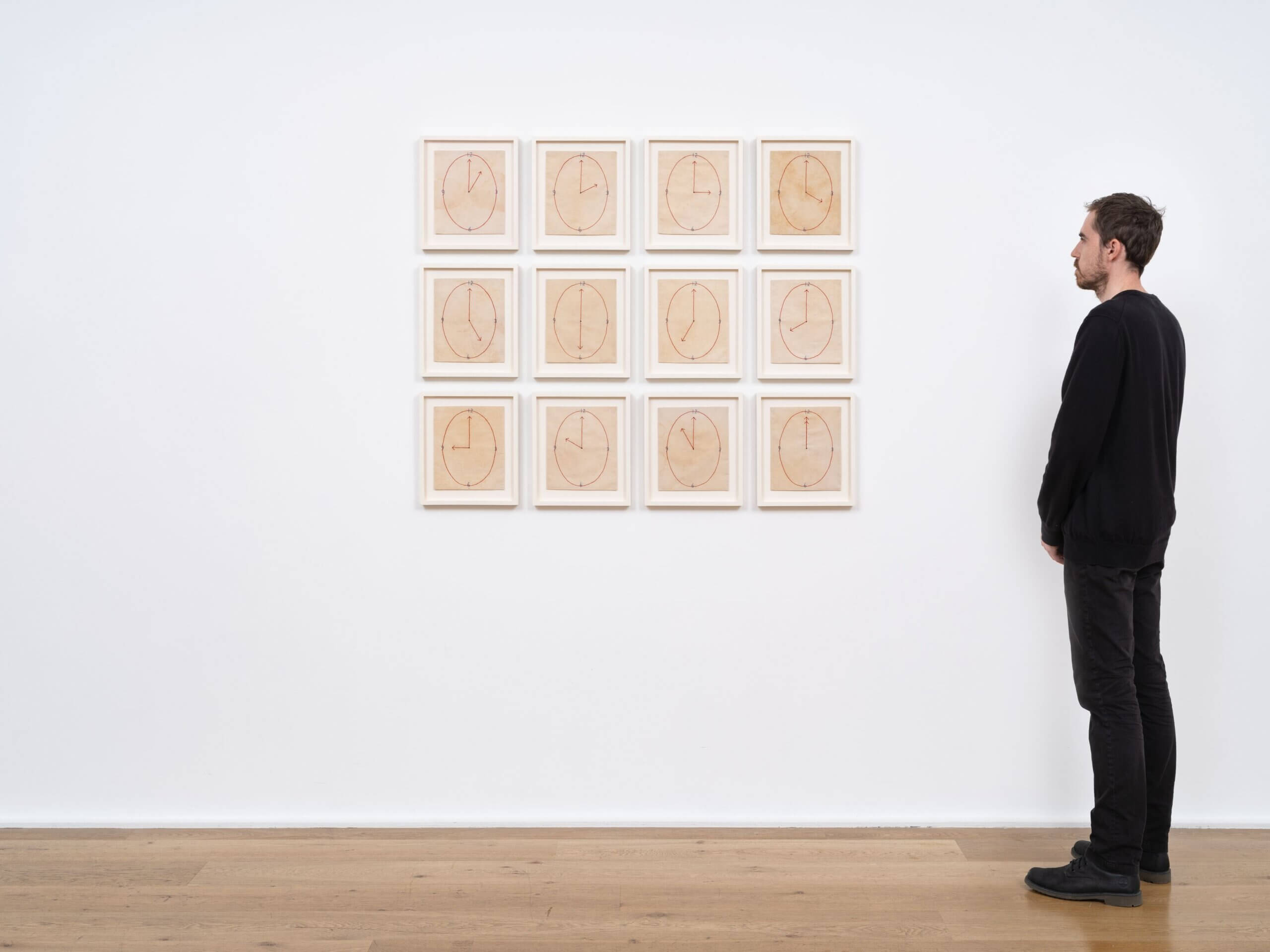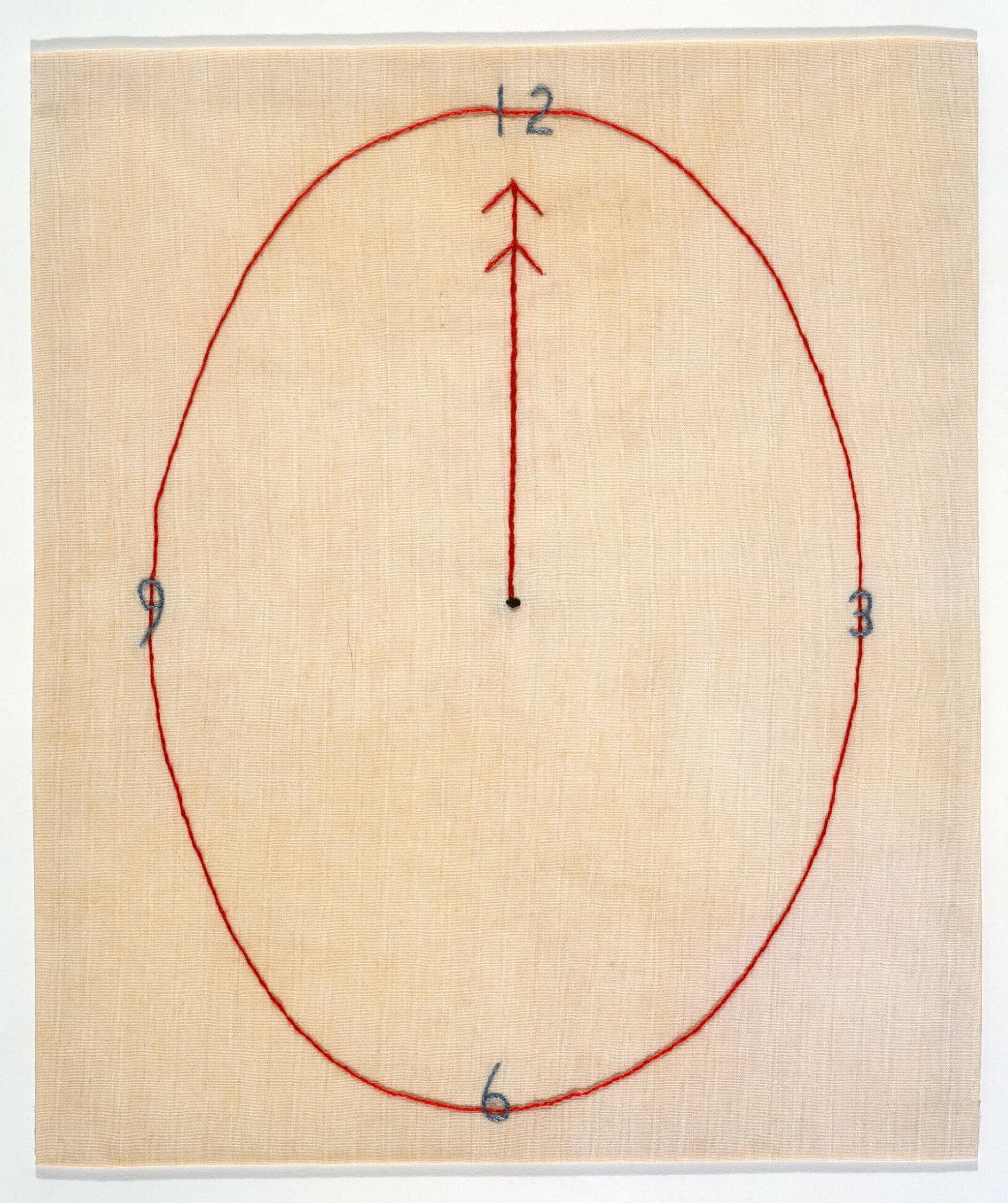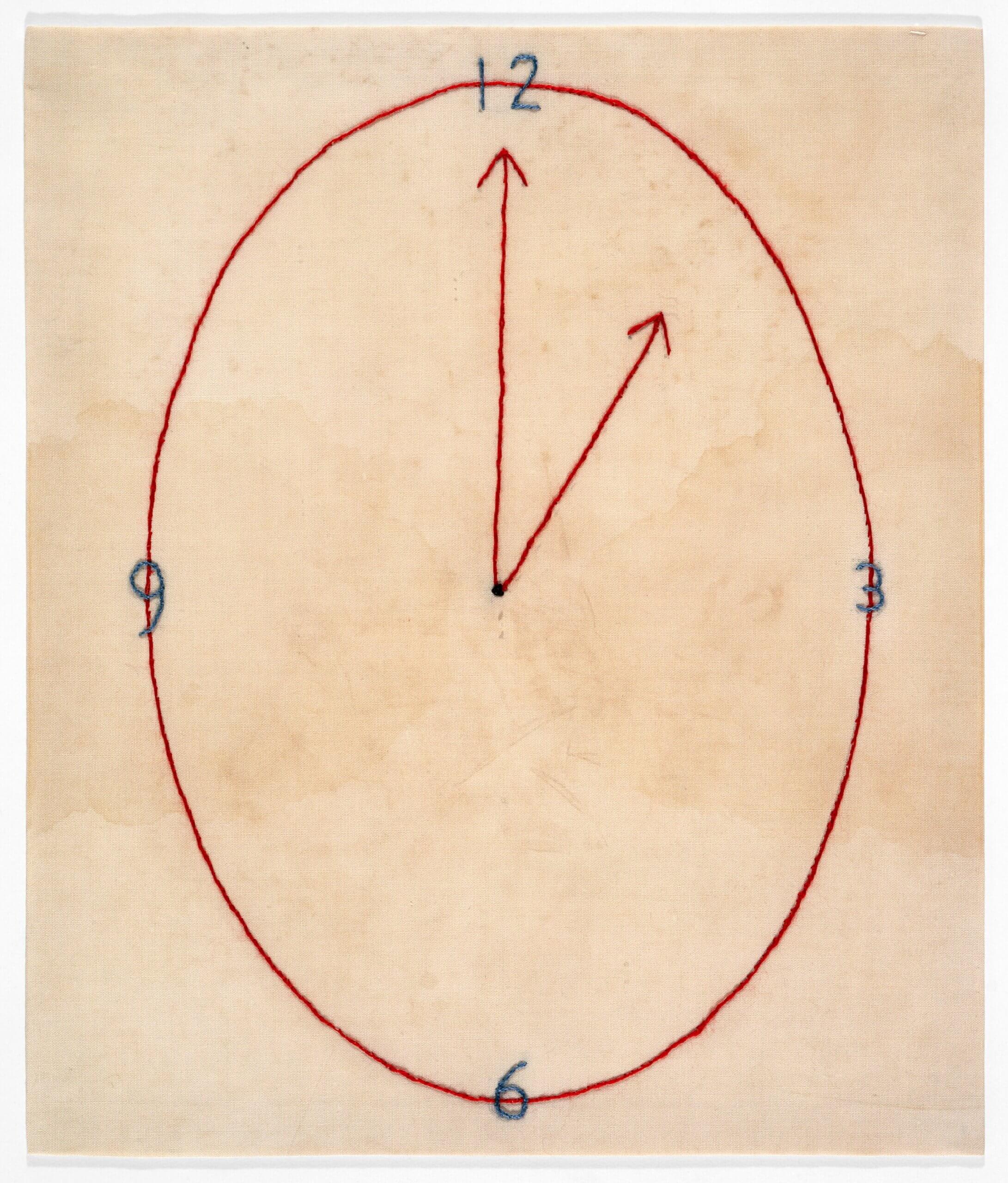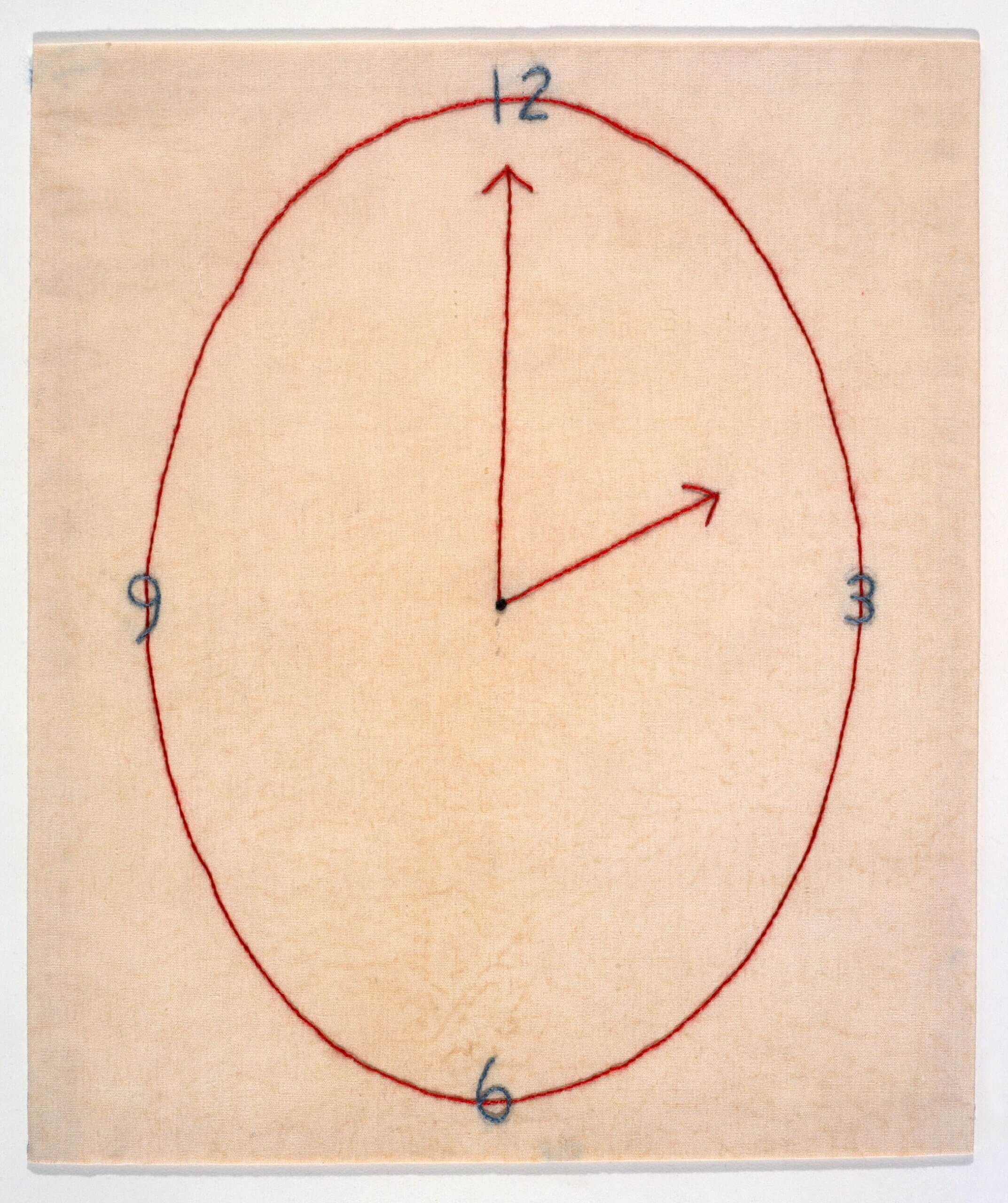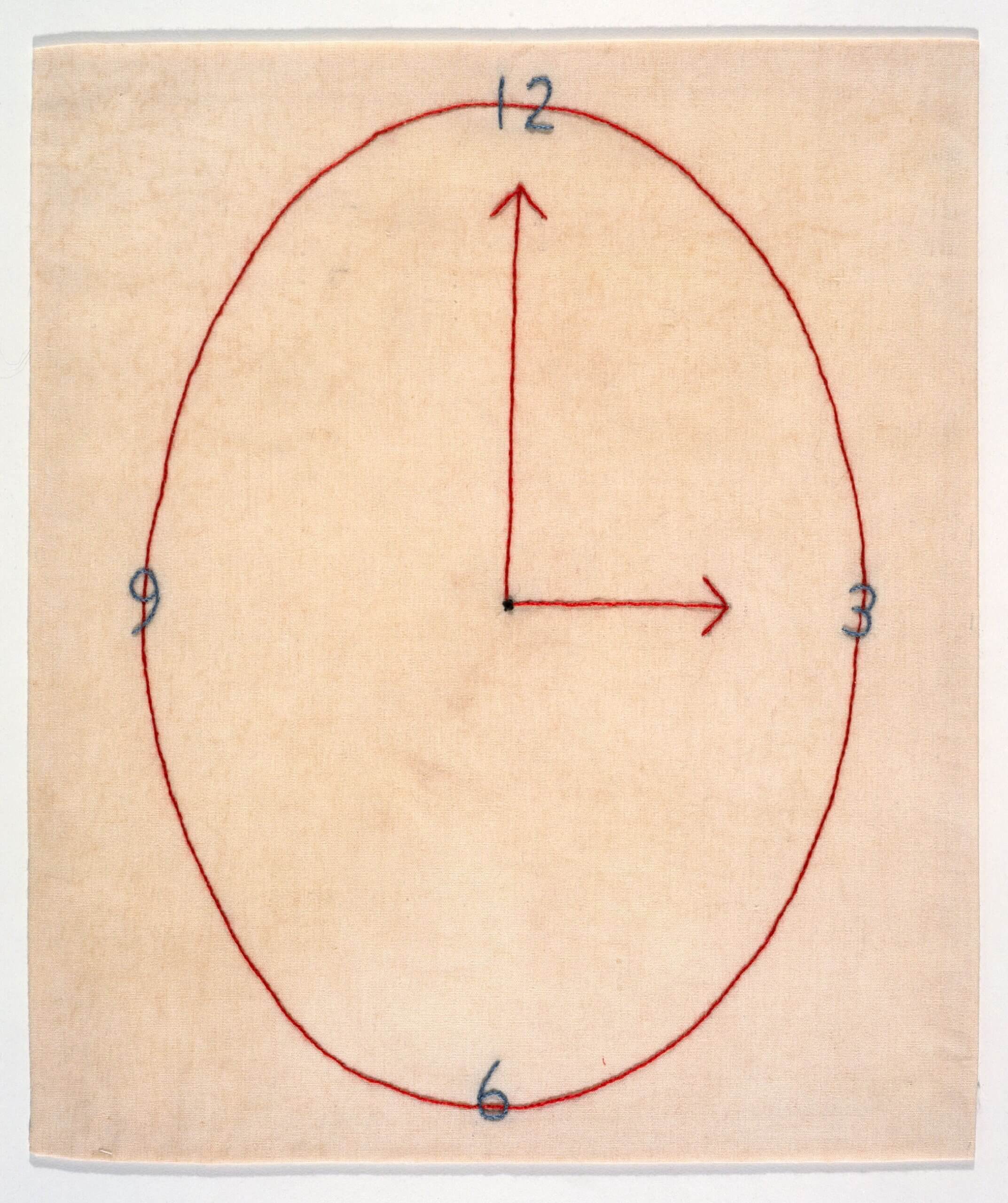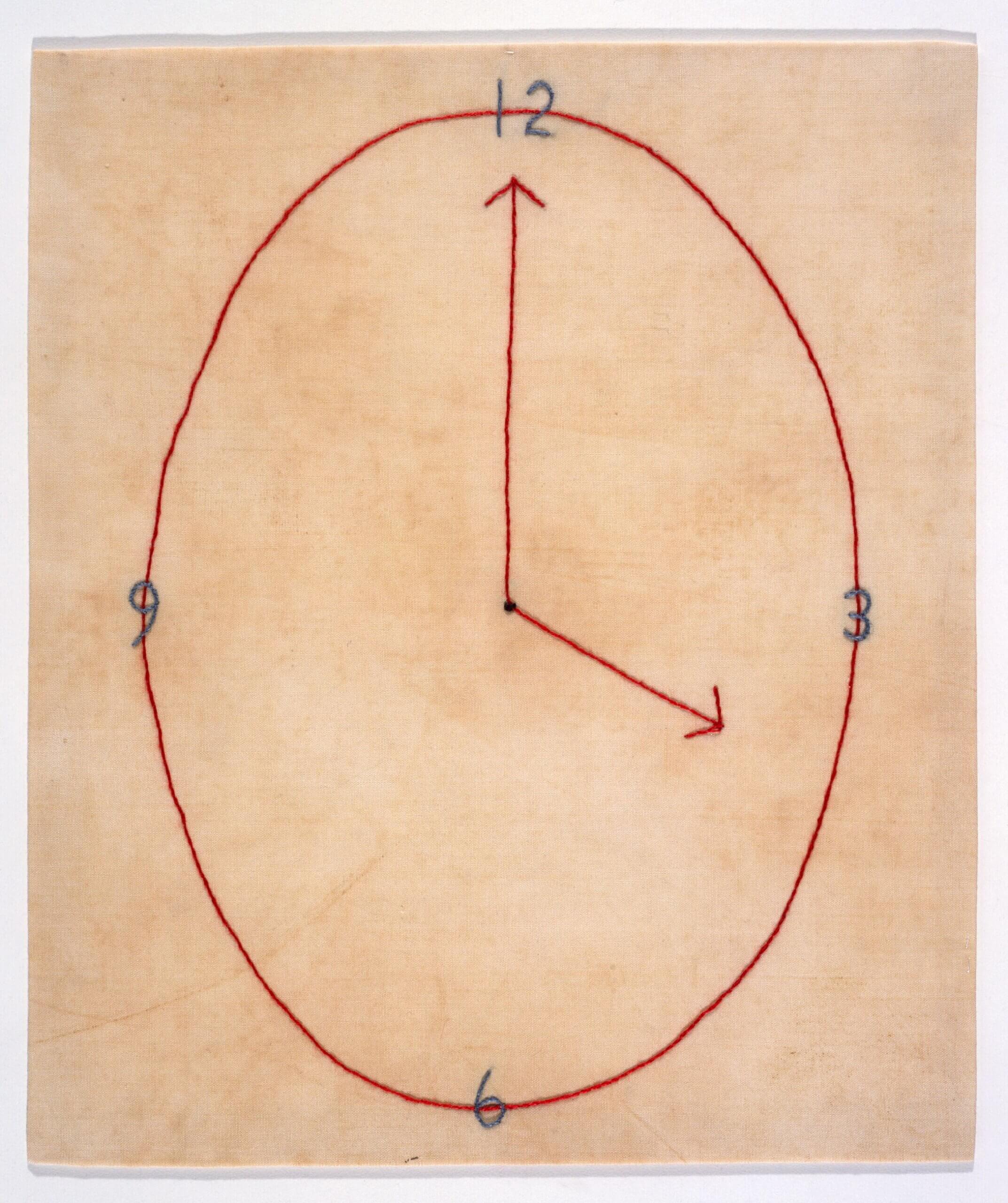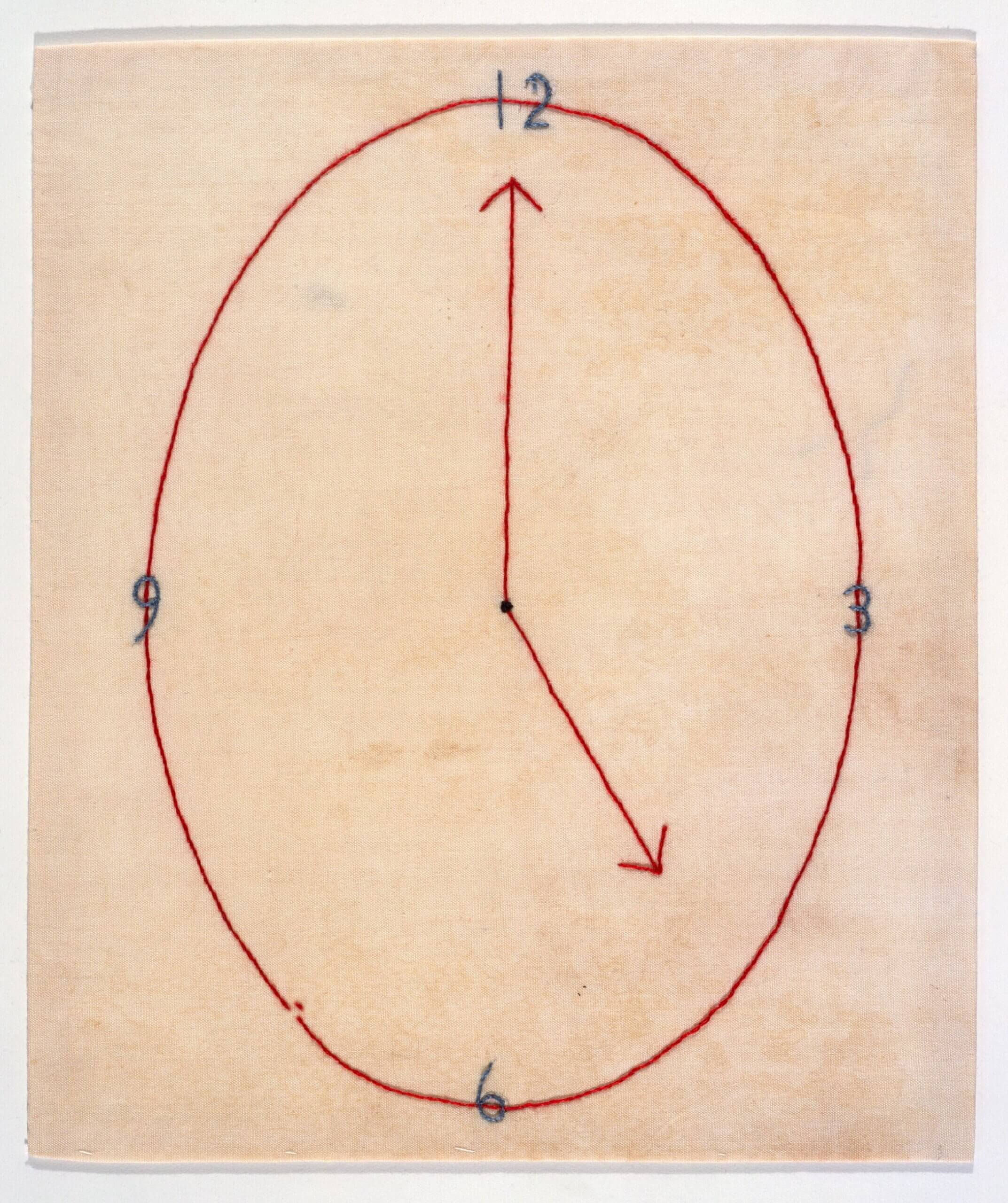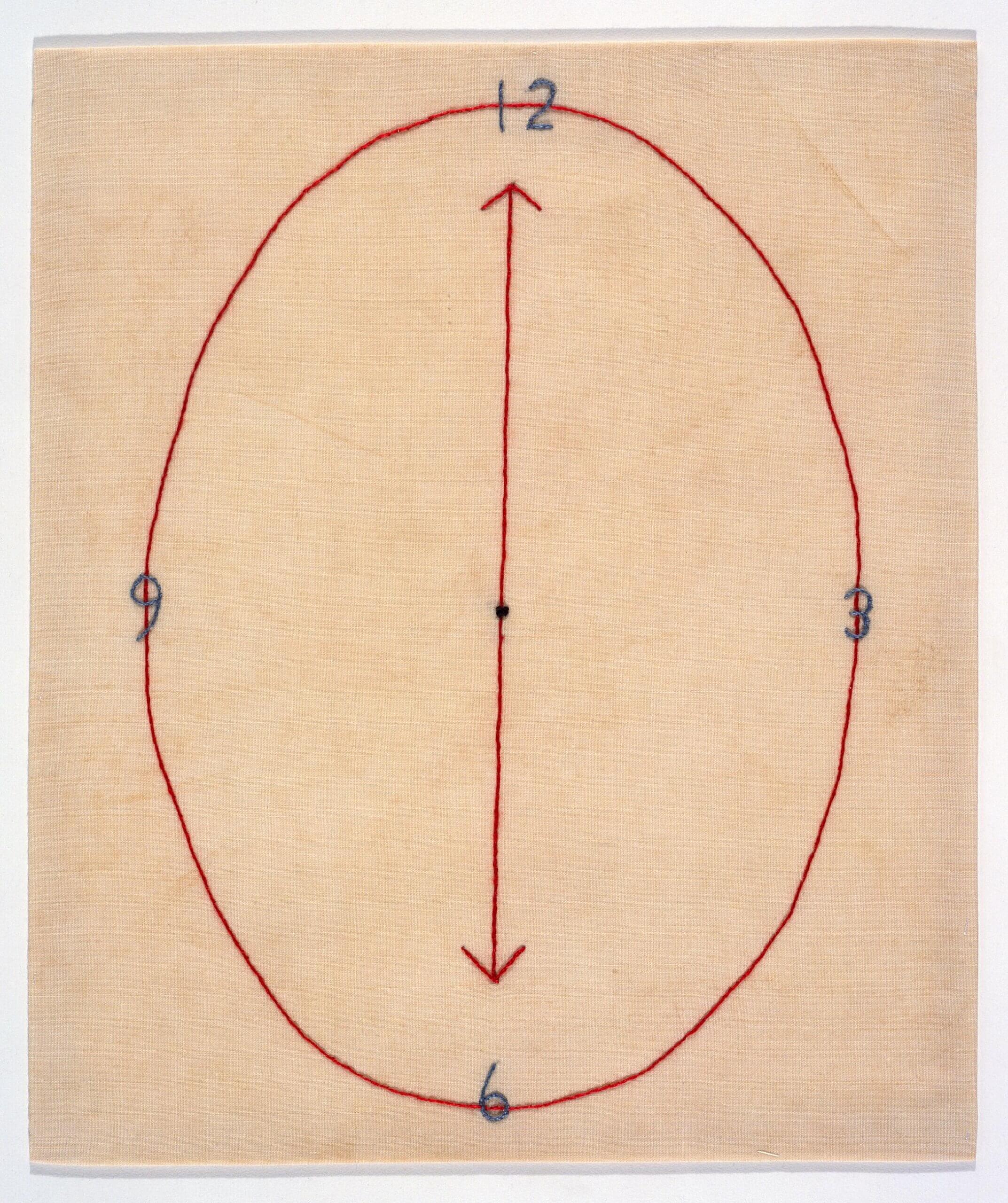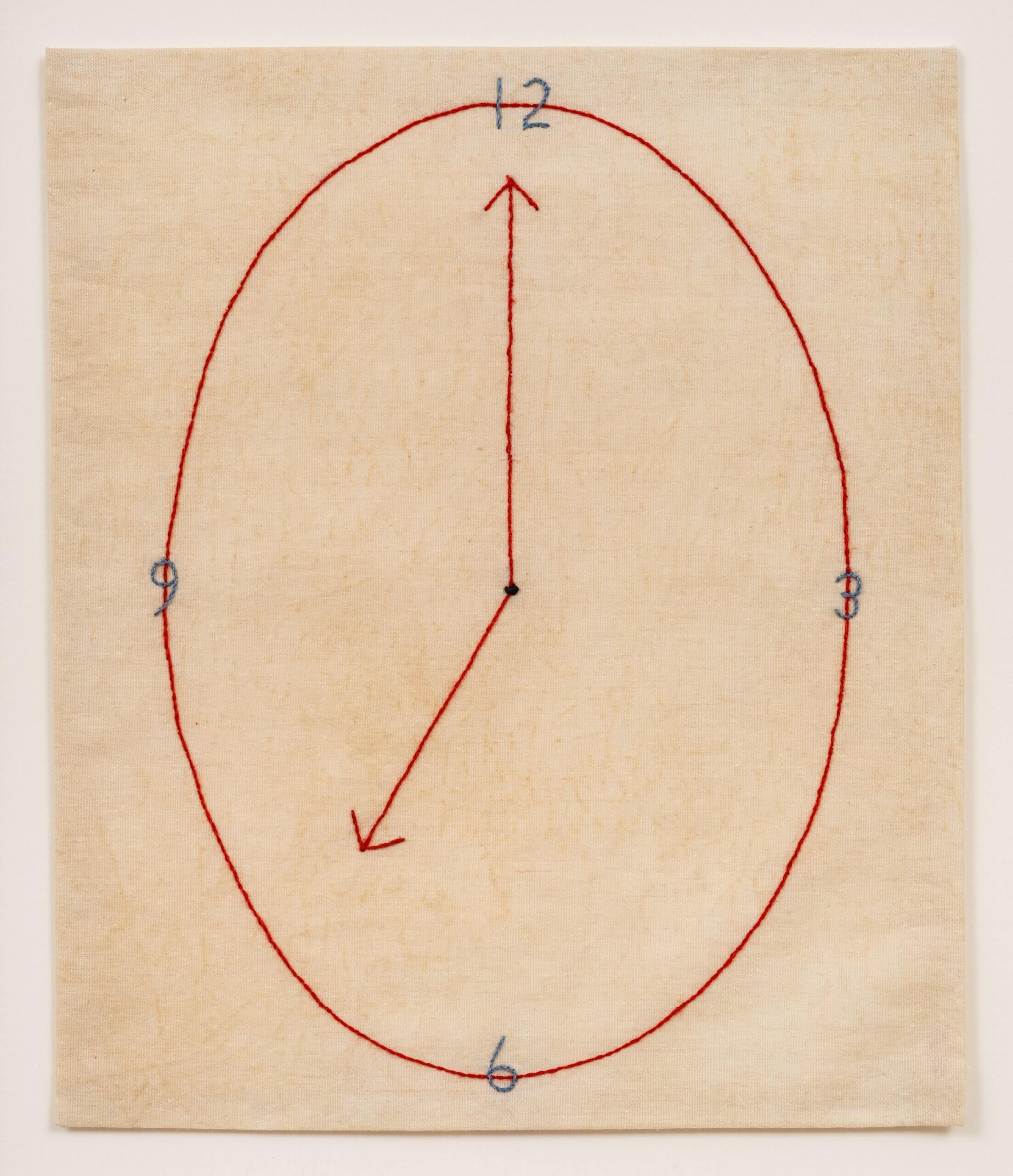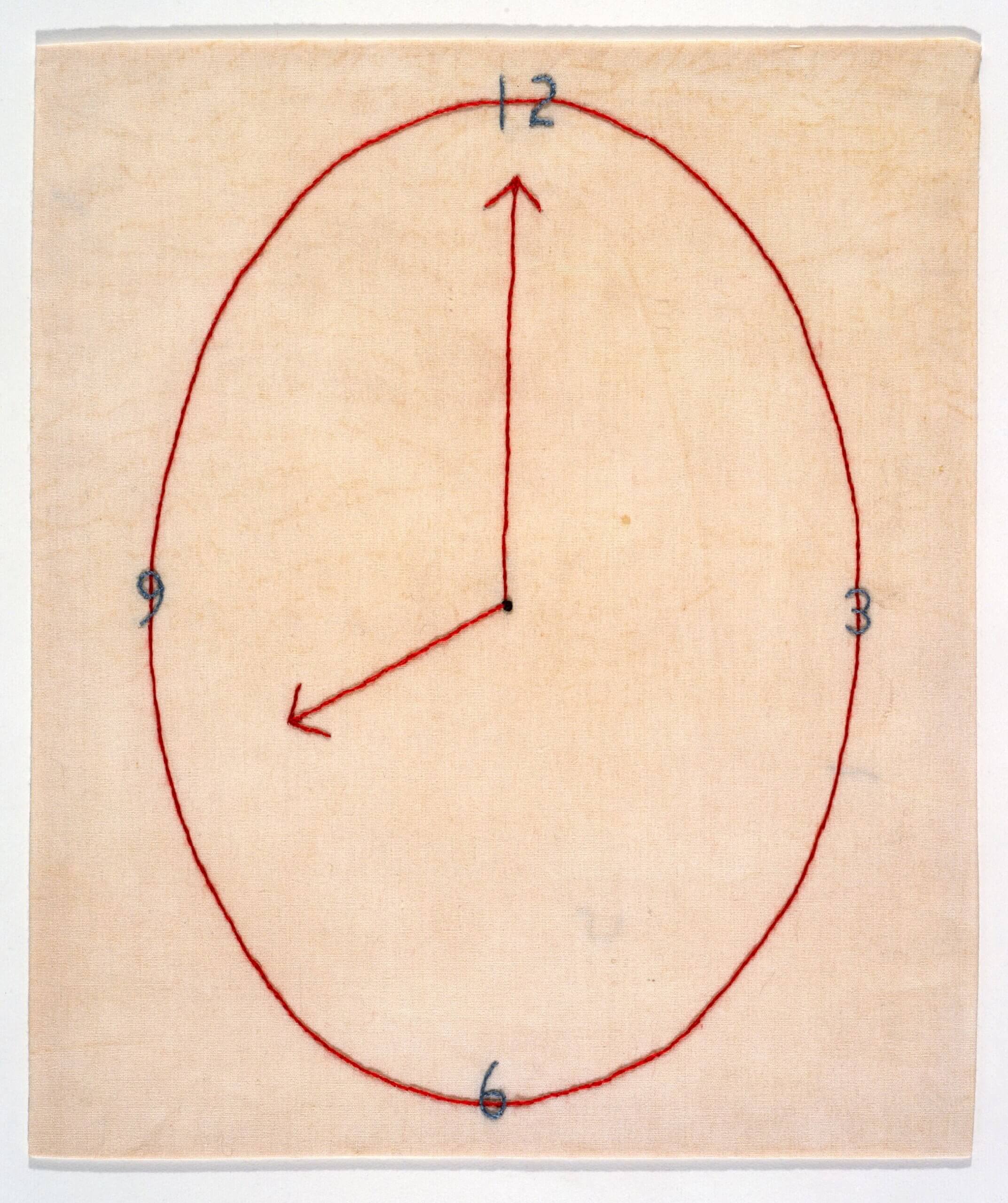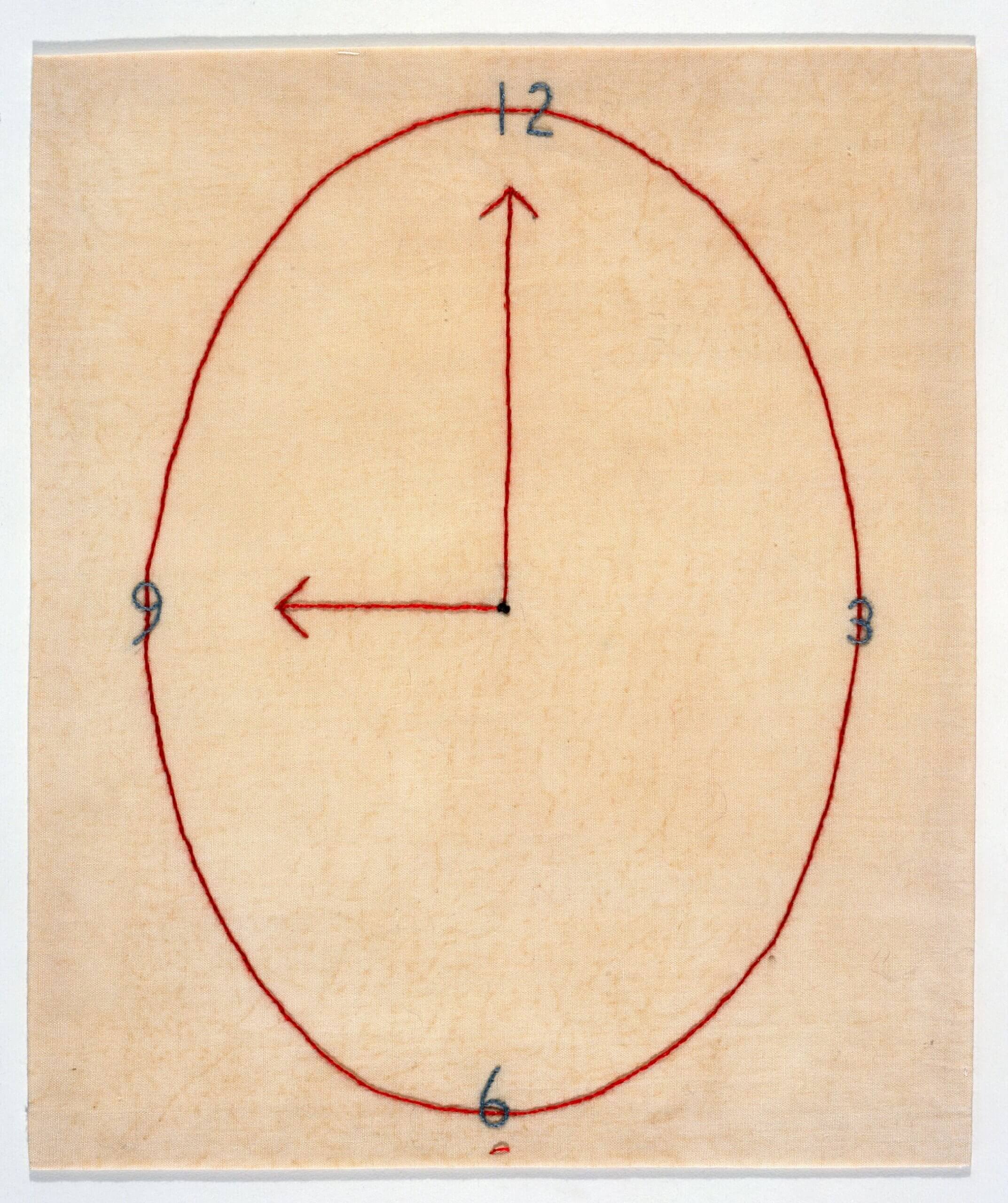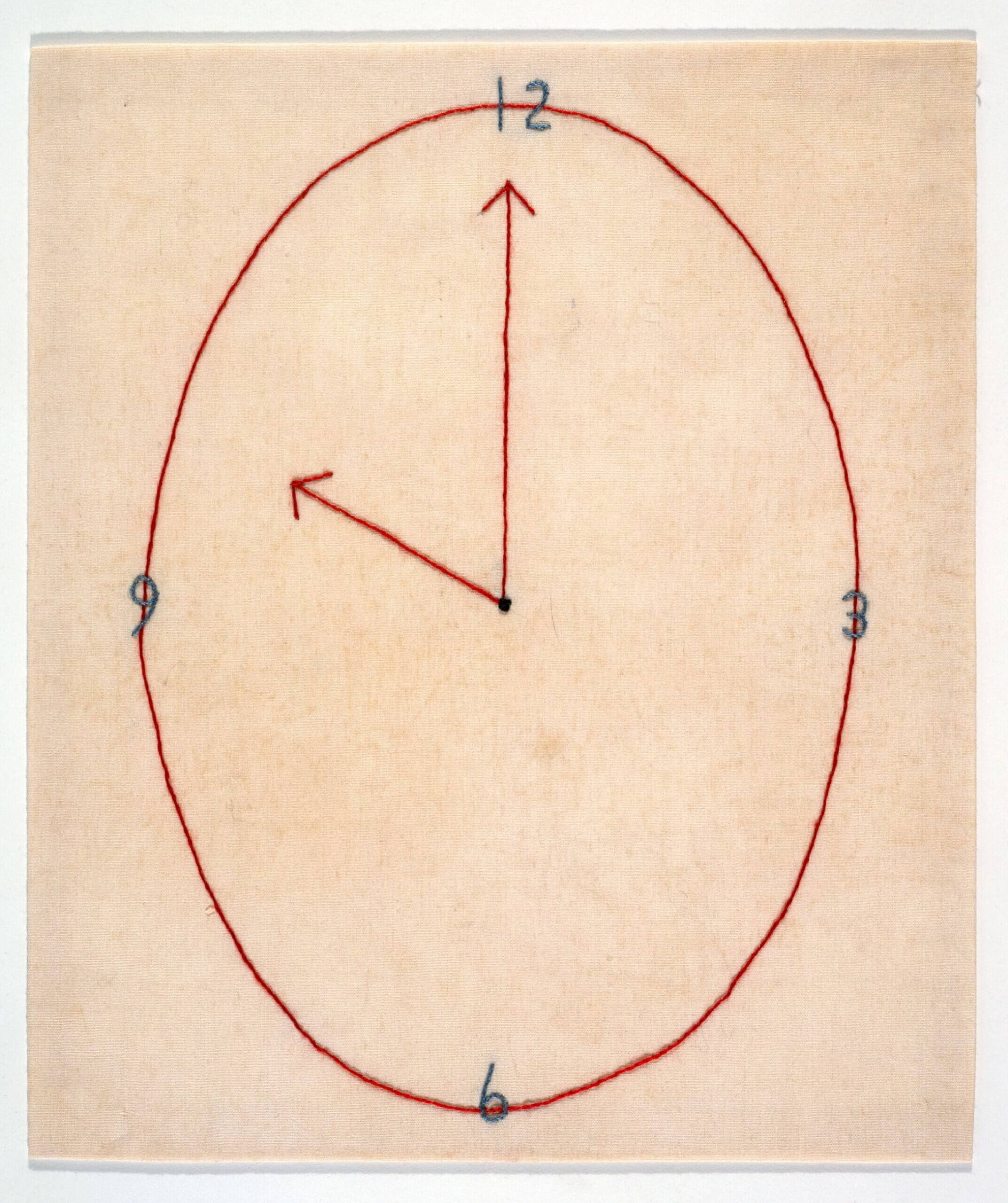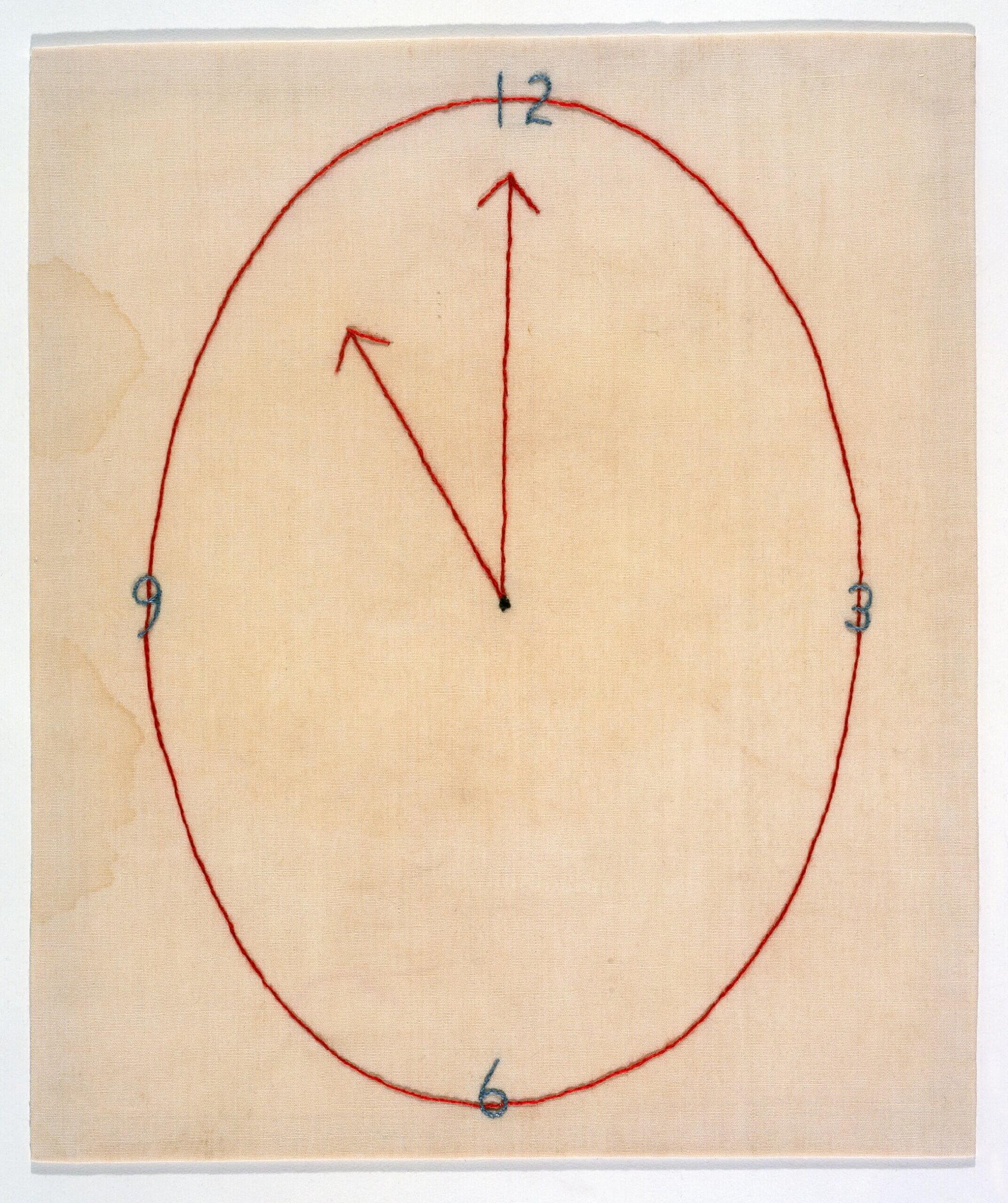
Louise Bourgeois
Hours of the Day
Hours of the Day
2006 Fabric and embroidery, suite of 12 24.1 x 20.3 cm / 9 ½ x 8 in (each) 33 x 28.5 x 3.4 cm / 13 x 11 ¼ x 1 ⅜ inches (each framed)
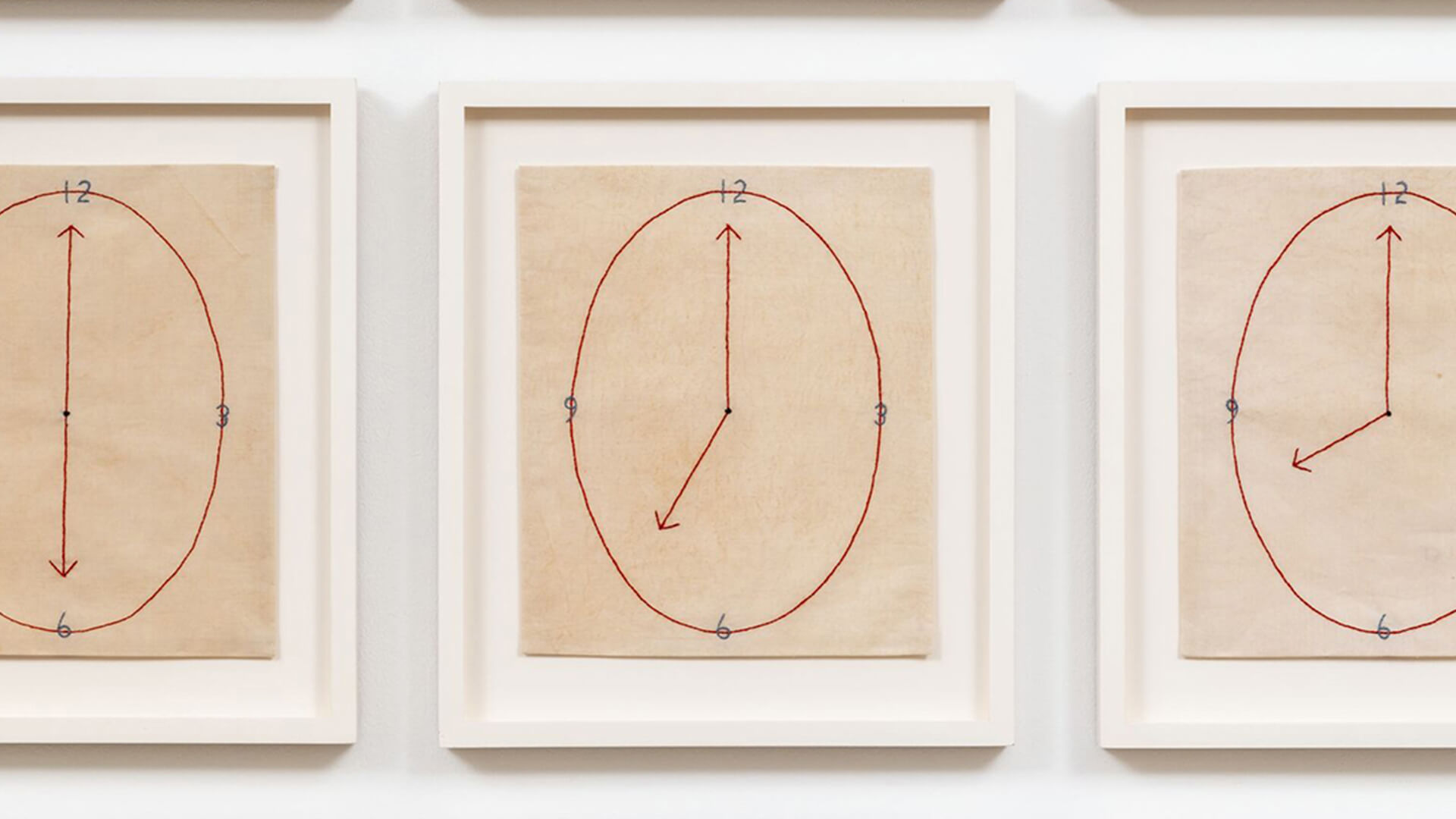
Created during the last decade of Louise Bourgeois’s life, ‘Hours of the Day’ (2006), a suite of twelve embroidered clocks on fabric, is a meditation on temporality. A long held interest, Bourgeois was fascinated by time’s endless, reiterative loops, which she explored in her psychologically charged art. She reasoned: ‘Time—time lived, time forgotten, time shared… What does time inflict—dust and disintegration? My reminiscences help me live in the present, and I want them to survive.’ [1]
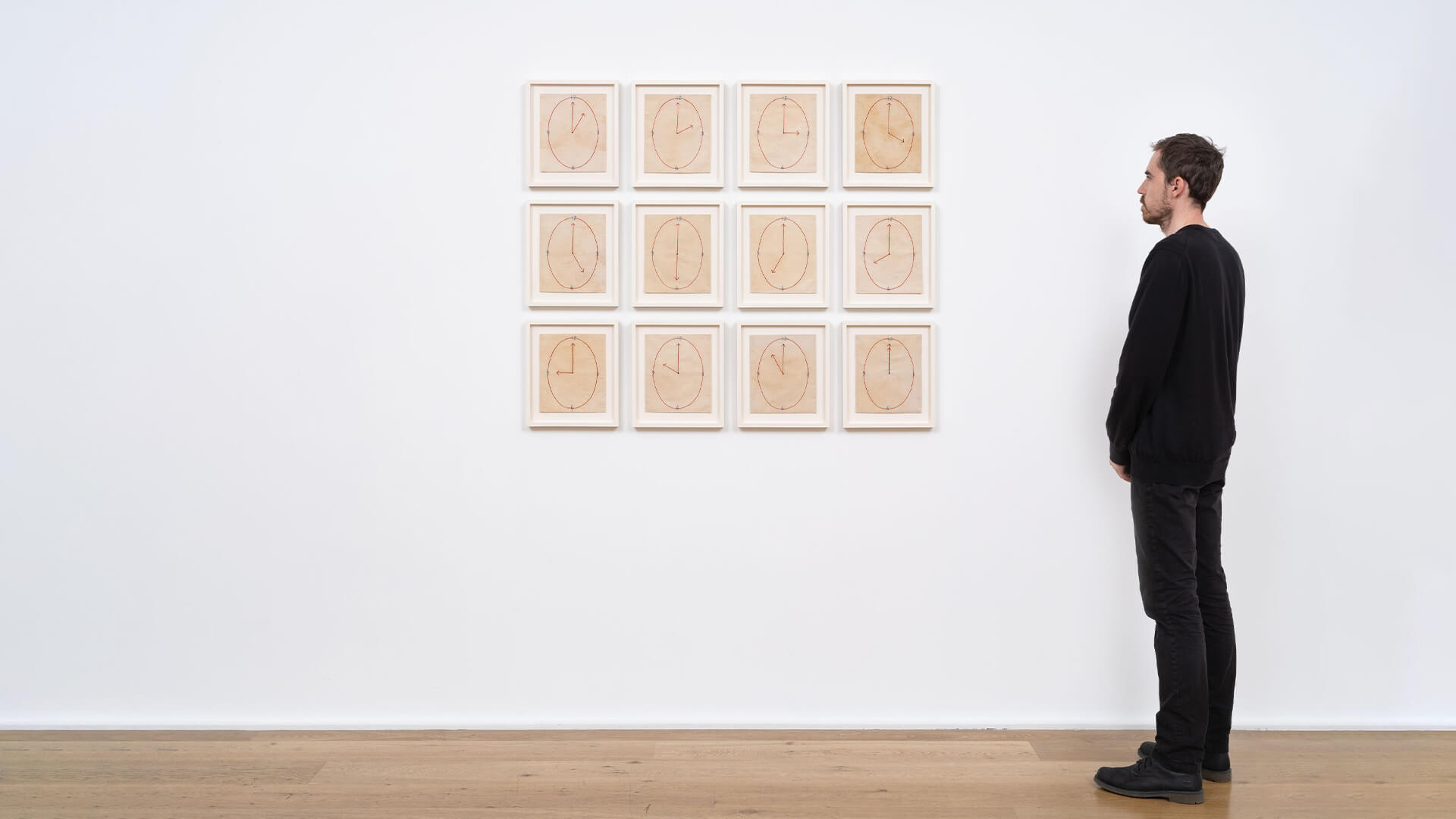
With its red threaded stitching on lightly variegated cloth ground, ‘Hours of the Day’ resonates with the artist’s childhood memories of her family’s tapestry restoration atelier, which bustled with the sewing, embroidering, re-weaving, and mending of fabrics. ‘When I was growing up, all the women in my house were using needles,’ she said. ‘I’ve always had a fascination with the needle, the magic power of the needle. The needle is used to repair the damage. It’s claim to forgiveness.’ [2]
‘Distance and patience and benevolence towards the hours of the day—respect the hours and help them to succeed each other harmoniously—the heavy hours of the afternoon and busy hours of the evening—the silent hours of the night.’—Louise Bourgeois [3]
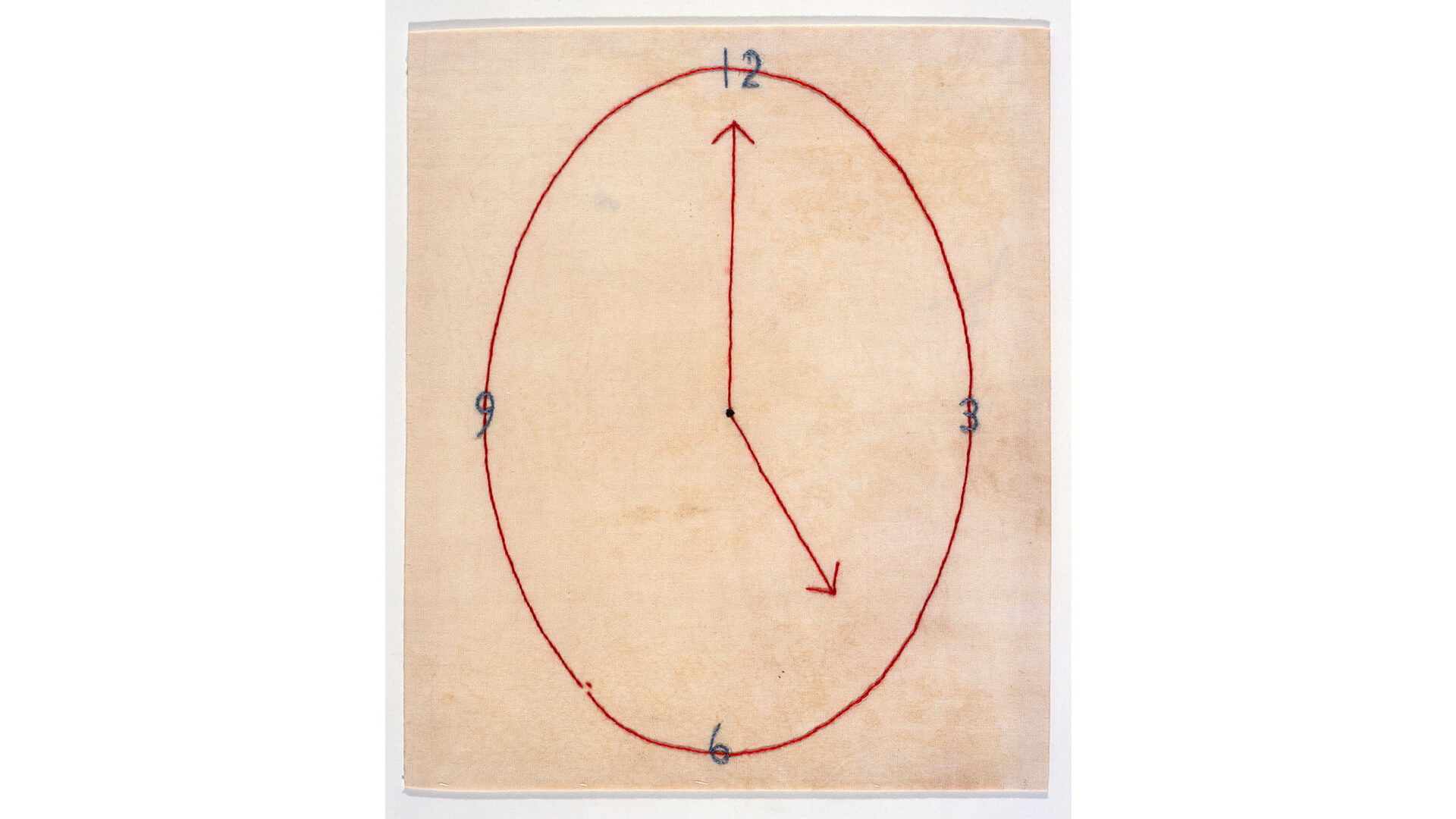
Bourgeois began employing soft materials such as wax and latex in the 1960s, and by the mid-1990s, fabric became a primary medium, appearing in sculptural heads and bodies, and, by the 2000s, in collages and prints on fabric. For decades, she saved clothes and domestic textiles, such as handkerchiefs and tablecloths, which she then incorporated into her work. For Bourgeois, these materials were imbued with memories and the act of sewing them was like psychological or emotional repair.
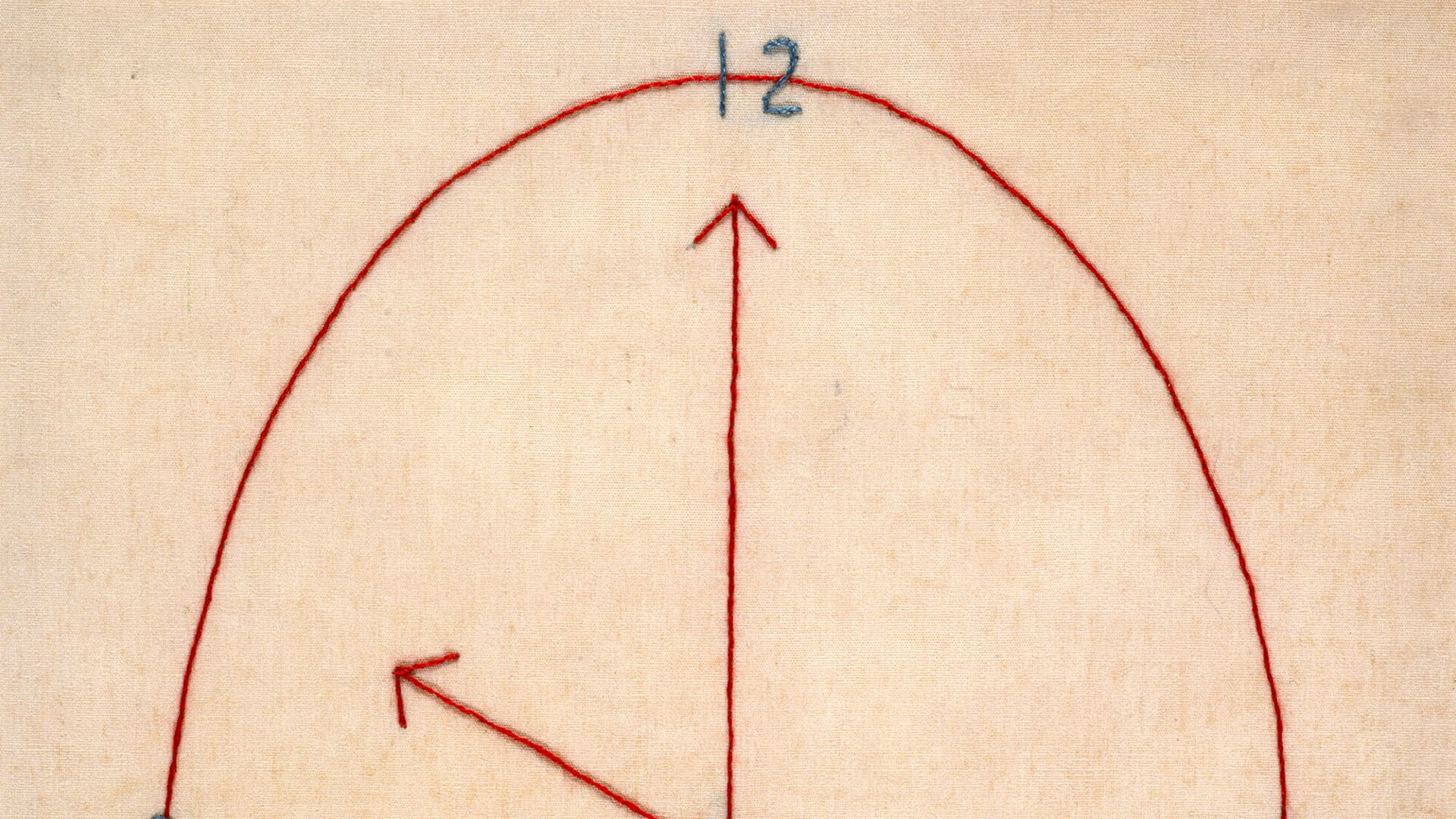
Each stark dial of ‘Hours of the Day’ depicts the passage of time, recording the duration of the day or night as the hour hand progressively moves from 1 through 12. In a related work of the same title made in the same year, Bourgeois opted for a 24-hour clock in lieu of the more common 12-hour.
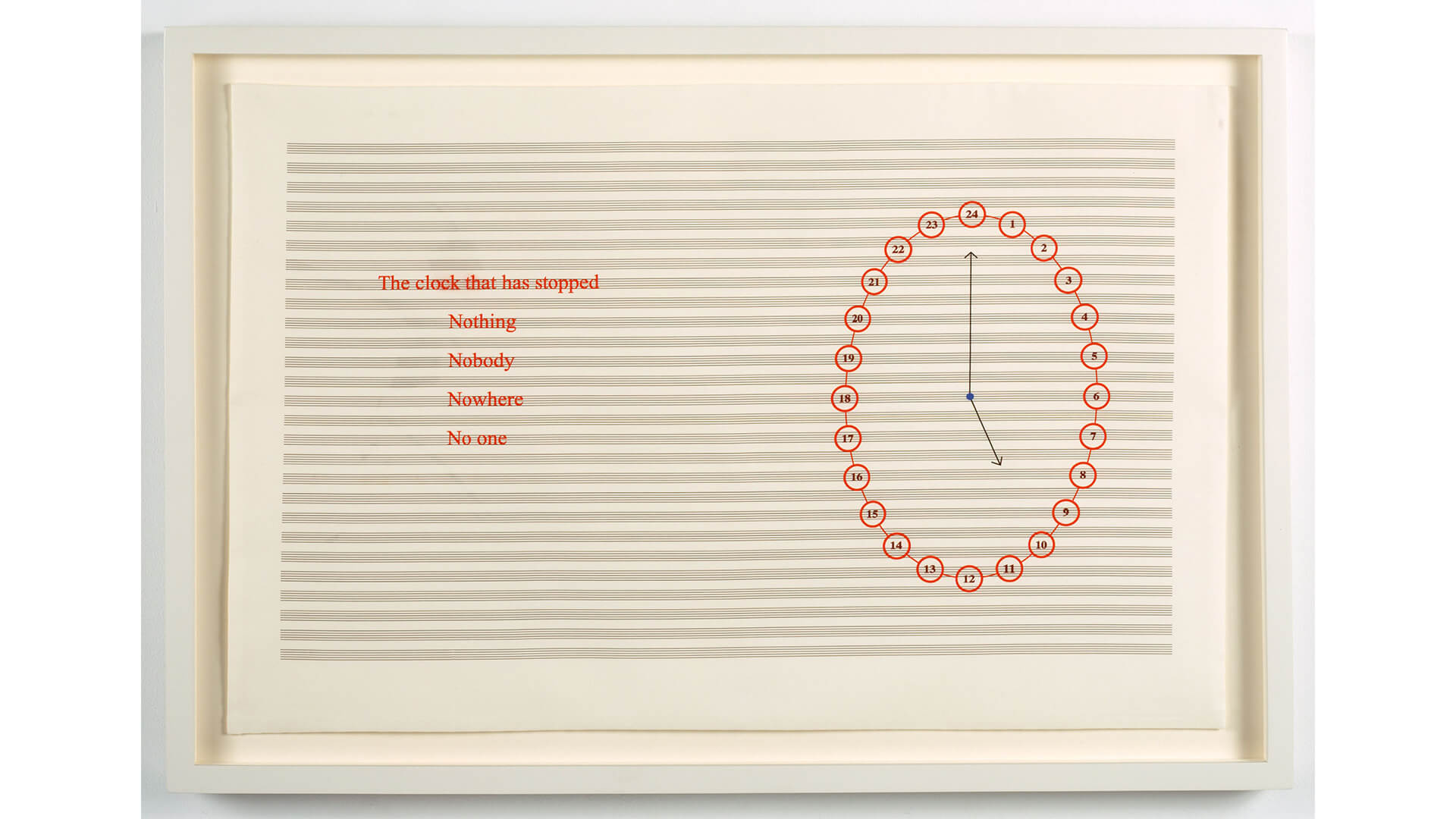
The ‘Hours of the Day’ illustrated book of digital prints on fabric (in the collections of MoMA and the Tate) pairs emotive and poetic snippets of text from Bourgeois’s daybooks—diaries which the artist maintained into her final years—with images of a clock, the time steadily changing from page to page. [Fig. 1] ‘The clock that has stopped / Nothing / Nobody / Nowhere / No one,’ Bourgeois wrote in panel 5.
[Fig. 1] Louise Bourgeois Untitled, no. 5 of 24, from the portfolio, ‘Hours of the Day’ 2006 Digital print on fabric Composition: 35.3 x 60.8 cm / 13 7/8 x 23 15/16 in

The editioned book, and the present suite of twelve unique embroidered panels, reference the medieval ‘book of hours’, which were richly illustrated and frequently personalised devotional manuscripts with sets of prayers to be recited throughout the day. For Bourgeois, it is the psyche itself that is sacred and worthy of hourly revisitation, and in this cycle of twelve panels we find her devoutly engaging with the complexity of memory and temporality, well into the twilight of her life.
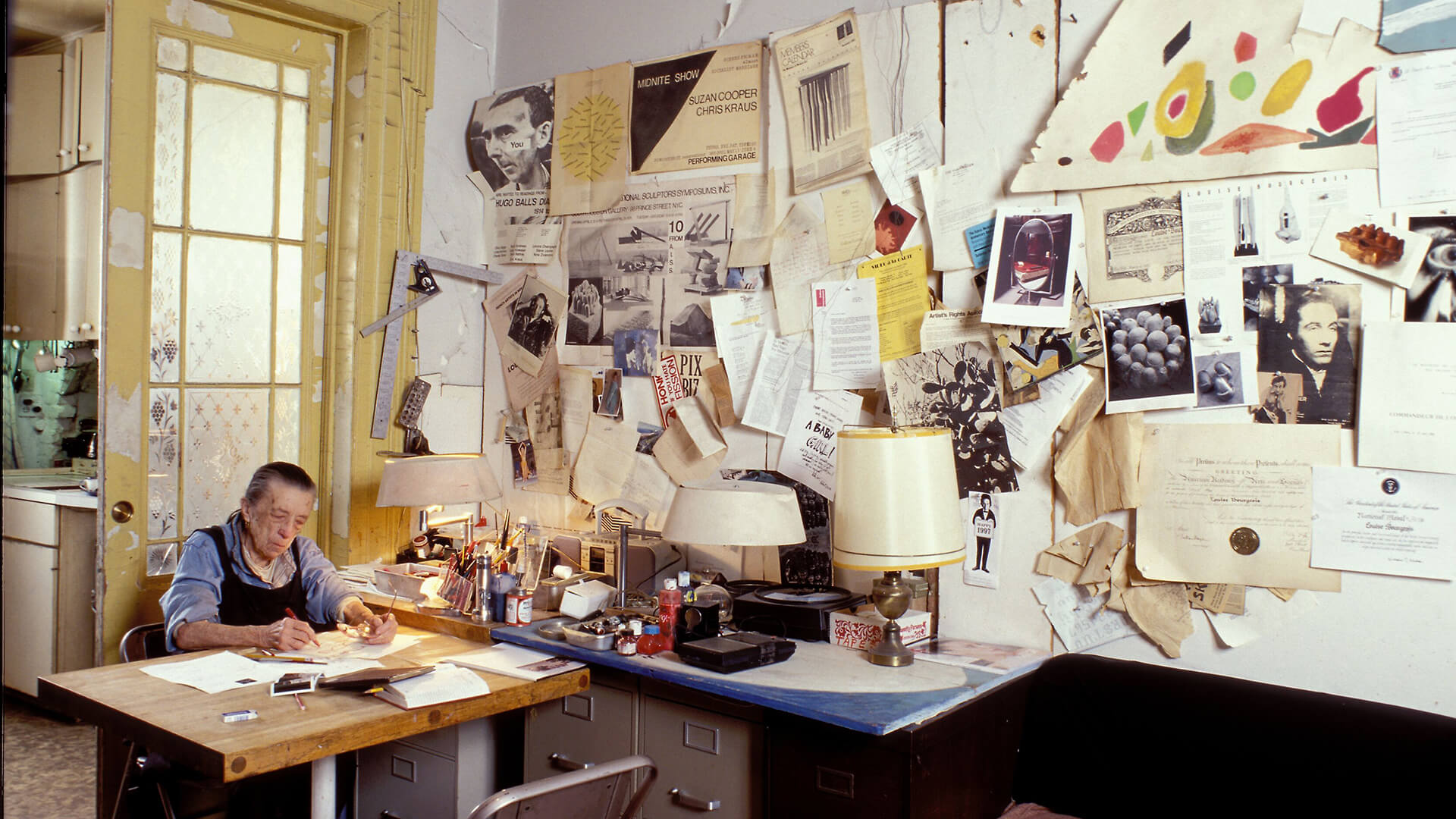
About the artist
Born in France in 1911, and working in America from 1938 until her death in 2010, Louise Bourgeois is recognized as one of the most important and influential artists of the twentieth century. For over seven decades, Bourgeois’s creative process was fueled by an introspective reality, often rooted in cathartic re-visitations of early childhood trauma and frank examinations of female sexuality.
Louise Bourgeois in her home on West 20th Street, New York, 2000. Photo: © Jean-François Jaussaud

On view in Gstaad
‘Hours of the Day ’ is on view by appointment at Vieux Chalet in Gstaad. Please visit our location page or contact our team to learn more.
All images © The Easton Foundation / 2022, ProLitteris, Zurich Artwork photography: Damien Griffiths
[1] Bourgeois quoted in Paulo Herkenhoff ‘Louise Bourgeois: Blue Days and Pink Days’, Milan/IT: Fondazione Prada, 1997, back cover. [2] Bourgeois quoted in ‘Self Expression Is Sacred and Fatal: Statements’ in Christiane Meyer-Thoss, ‘Louise Bourgeois: Designing for Free Fall’, Zurich/CH: Ammann Verlag, 1992, p. 178. [3] Bourgeois, loose sheet, July 12, 1965 (LB-0309), quoted in Deborah Wye, ‘Louise Bourgeois. An Unfolding Portrait’, New York: Museum of Modern Art, 2017, p. 112.
